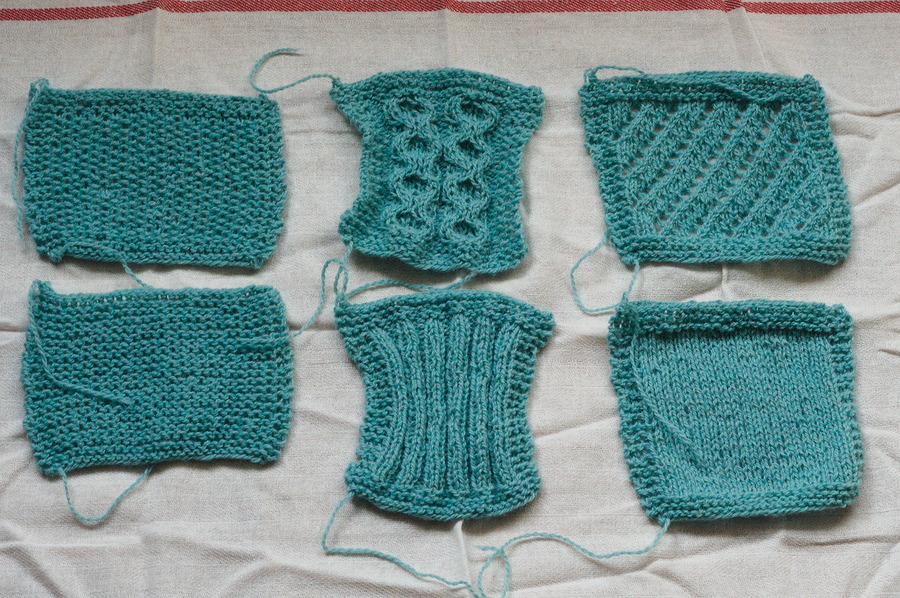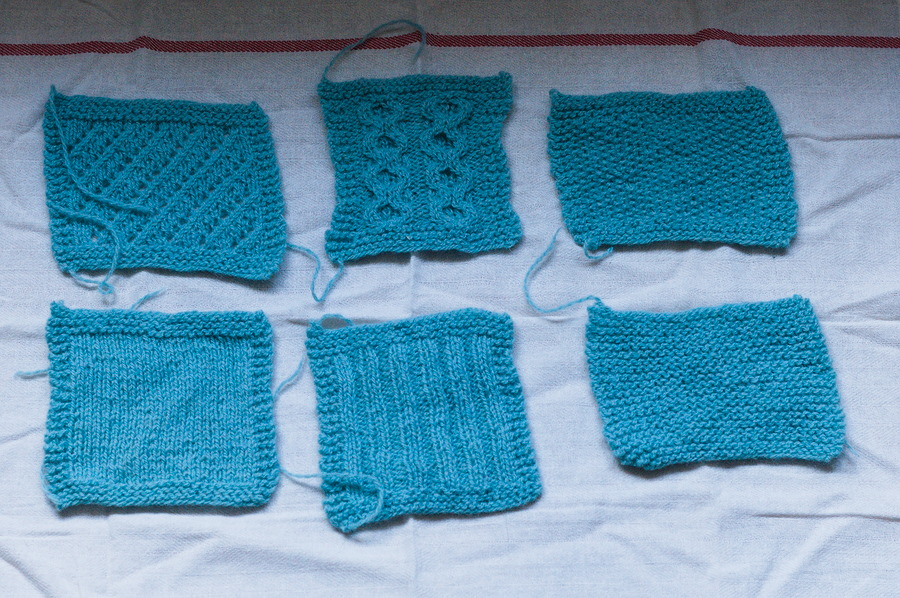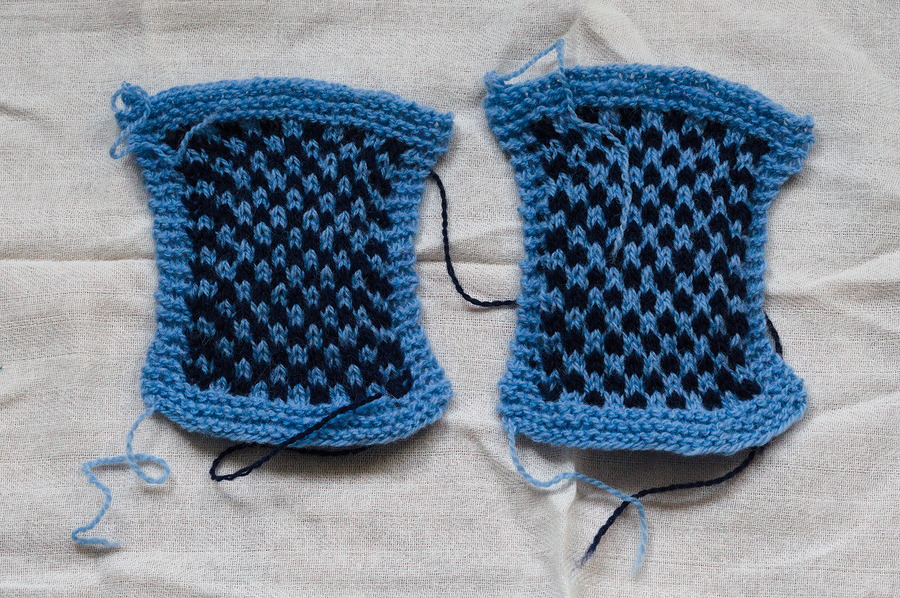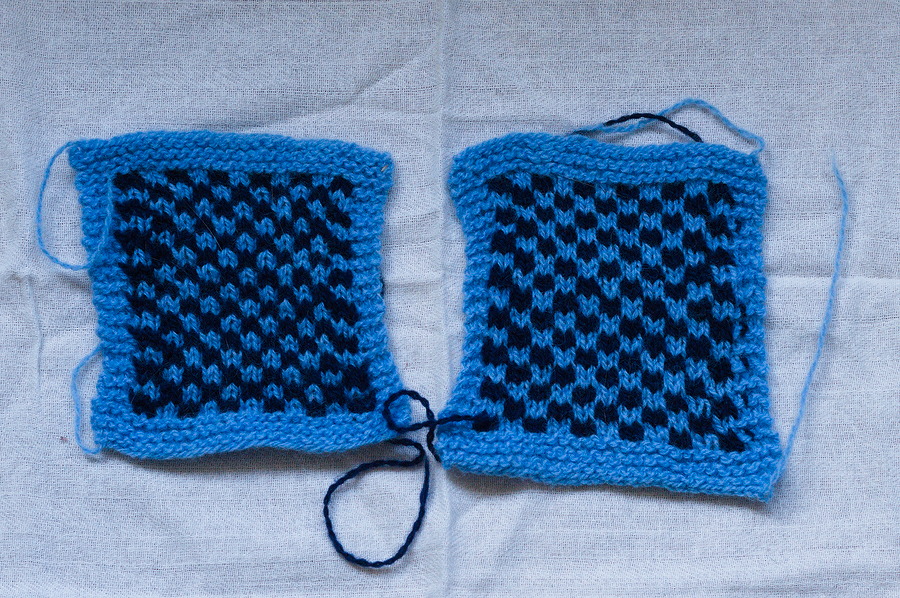
By Anna - 23rd February 2023
and why neither is hard or scary
Wool and other animal fibres, most of all alpaca, are prone to felting when treated incorrectly. Yarns therefore often come with warning labels and new knitters can be overwhelmed by cautioning advice telling them to be very careful when washing their finished work. This is true, of course, but washing wool still does not need to be hard or scary.
The easiest, and often safest, way to wash wool is completely by hand. Fill a bucket, sink or bathtub, depending on the size of item you wish to wash, with cold to luke warm water and add a little wool wash. Gently press the item into the water until it stays fully immersed. Wool traps a lot of air that needs to be pushed out to allow the wool to soak up the water instead. Leave the knitwear unagitated for 20-30 minutes, then drain off the water, gently press the soapy water out of the item and fill the container with water again to rinse. Leave the item for another 5-10 minutes, maybe carefully swish it around once or twice, then drain off the water again, press out as much as you can without wringing and take the item out. Be careful to not only pull on one corner. The item is heavier now and allowing it to hang off one part can distort the shape. To further dry it, lay it between two towels and roll it up while adding pressure. Again, do not wring. Now unroll and lay the item flat to dry, on another towel. This is where many patterns and knitters will recommend to “block”. What that is and whether it is necessary is a topic for later on.
For now, further examination of the idea of felting is needed. Wool and other animal fibres felt when exposed to friction and heat. Both are necessary to fully felt an item and the type of fibre is also relevant. Alpaca and many of the softer wools will felt easily, some sheep breed on the other hand do not felt at all. The requirement for both friction and heat is where the washing process can be made easier. Many washing machine come with a cold wool or delicate cycle. These will leave the contents of the machine to mostly just soak, with very gentle agitation every few minutes, a rinse and then a slow spin. These cycles are usually very safe to use for knitwear, but this can of course vary between machine. Front loading machines are recommend, top loading machines generally add too much agitation to be used with knitted items. To test if your wool or delicates cycle works with the types of wool you prefer to use, knit a handful of swatches and wash them in the machine. In my old front loader with a cold wool cycle, nothing has ever felted.
You can even go a step further: As friction is part of what felts wool, a high speed spin cycle is perfectly fine. The items are pressed to the outside of the drum of the machine while it spins, not moving against each other at all. When the wool cycle is done, I always use a full speed spin cycle to get the water out. It helps with drying the items, even heavy weight garments are usually dry within two days after a spin in the machine. Be careful not to overfill the machine. If too many pieces are in there, they will rub against each other, increasing the risk of felting. Two to three garments and a few pairs of socks are my limit, but this again varies between machines.
Precautions should be taken for certain, but washing knitwear does not have to be as scary as it is sometimes made out to be. You simply need to get to know the fibres you are working with as well as your washing options and how they interact with each other.
Almost all patterns recommend to wash and block a finished item. Depending on the yarn, it may simply be necessary to get e.g. excess spinning oil and dye out, which can sometimes be left from the production process. Most non-superwash yarns “bloom” when washed, they puff up, get fluffy and make a more coherent fabric. But washing by fully immersing the item in water and leaving it to soak has another extremely beneficial effect: It relaxes the stitches and evens out slight inconsistencies in the knitting. Textures become more pronounced, colourwork evens out and feels more like on fabric instead of two colours fighting each other, lace open up. The effects vary depending on the yarn, texture and type of item, but almost everything looks more smooth and finished when washed.
The pictures below show the same six swatches before and after washing and drying flat on a towel. Neither were pinned in place, they all have been in the washing machine with a high speed spin cycle, then laid out on a towel and left to dry. Depending on the texture, the changes are more or less obvious, but all have relaxed and opened up, as well as become a more coherent fabric thanks to the blooming non-superwash yarn.

 six swatches with different textures, before and after washing
six swatches with different textures, before and after washing
With colourwork, the changes are even more significant, as these two swatches show. They were very narrow and compressed fresh off the needles, but have relaxed and squared out with washing.

 two swatches with a checkerboard pattern, before and after washing
two swatches with a checkerboard pattern, before and after washing
The only items for which I use a blocking method that stretches them are colourwork socks. There are many options of sock blockers on the market, all a basic flat sock shape you can pull the knitted sock over so it dries stretched. This is not necessary for the fit or comfort. A sock will “block” itself when first worn. Using sock blockers is simply the easiest way to make socks look pretty for pictures or when gifting them.
 two socks of the same pair, one washed and blocked, the other fresh off the needles
two socks of the same pair, one washed and blocked, the other fresh off the needles
Now let us get to the mysterious process of blocking. For almost all items, it is sufficient to simply wash them as described above and lay them out flat to dry. I do this for all garments, hats, mittens etc. In some case, the item will benefit from being pinned out to remain stretched while drying. This is mostly relevant to lace items such as shawls, as they need to open up to show their full beauty. For those, the most common practice is to get some kind of water-resistant mats that allow you to stick pins into. Traditional Shetland methods also include hap boards, where this specific type of square shawl is sewn into a wooden frame to be stretched. With neither the space to do it nor enough interest in knitting pieces that require this intense finishing work, there is little advice I can give on these methods, but there a loads of other resources out in the wild.
For most items though, laying them out flat is absolutely sufficient, as the swatches above show. When drying the pieces on a towel, there will be slight resistance from the fabric, so you can pull and press your item into a specific shape and in most cases, it will stay there until it is dry and moved.